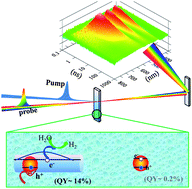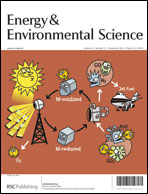Wavefunction engineering in quantum confined semiconductor nanoheterostructures for efficient charge separation and solar energy conversion
Abstract
Colloidal quantum-confined semiconductor nanoheterostructures (SNHs) that are composed of multiple component materials in rationally designed spatial arrangements are promising light harvesting and charge separation materials for solar energy conversion. SNHs can be engineered to exhibit type I, quasi-type II and type II carrier localization, affecting their photophysical properties and photochemical performances. Unlike bulk semiconductor heterostructures, the electron and hole energy levels and spatial distributions in SNHs can be continuously tuned by adjusting the material dimension through the quantum confinement effect, providing additional control of their properties through wavefunction engineering. In this article, we review recent progress in using wavefunction engineering to control the absorption and

- This article is part of the themed collection: Recent Advances in Solar Energy Conversion and Utilization

 Please wait while we load your content...
Please wait while we load your content...